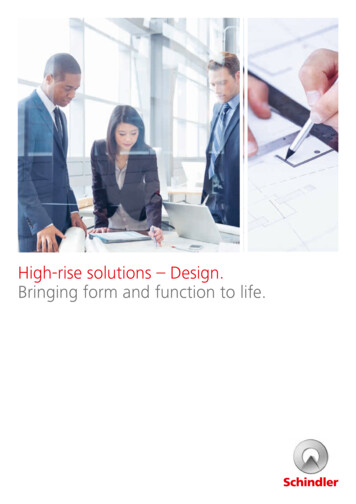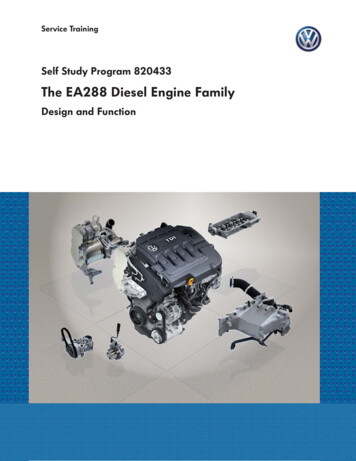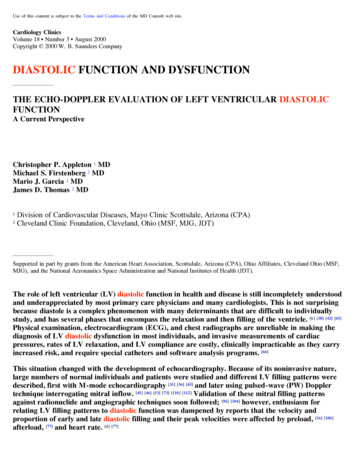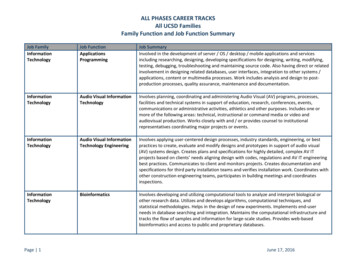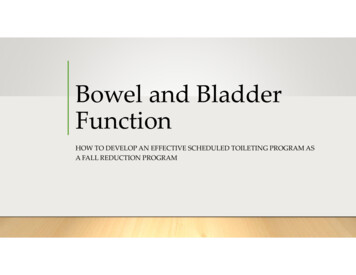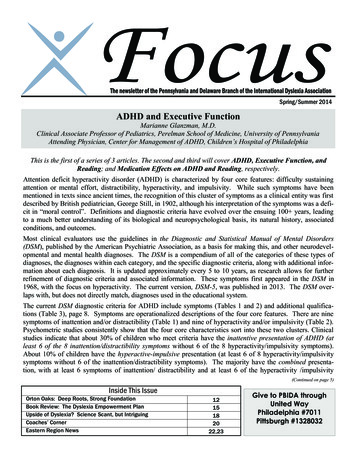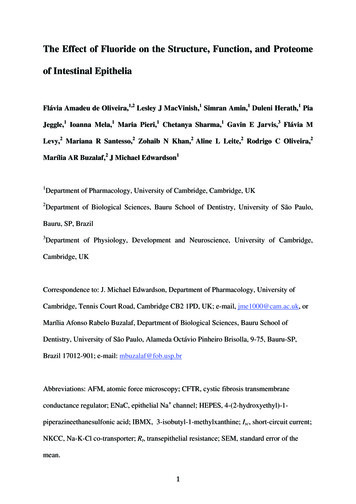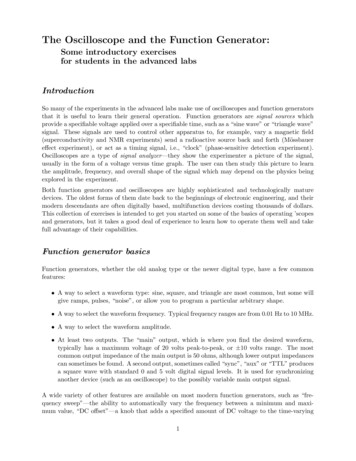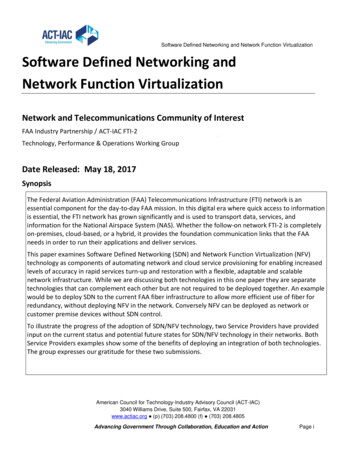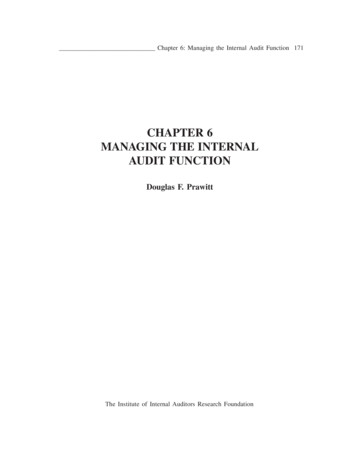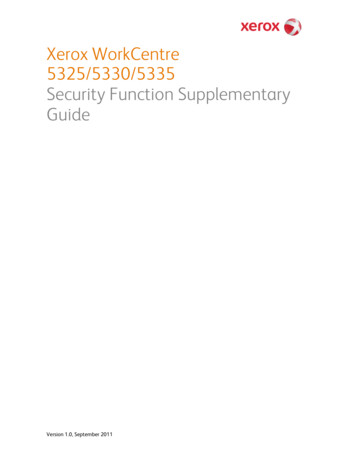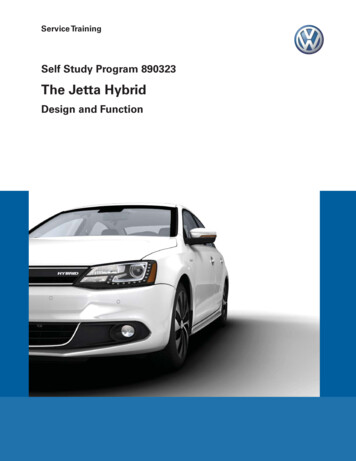
Transcription
Service TrainingSelf Study Program 890323The Jetta HybridDesign and Function
Volkswagen Group of America, Inc.Volkswagen AcademyPrinted in U.S.A.Printed 08/2012Course Number 890323 2012 Volkswagen Group of America, Inc.All rights reserved. All information contained in this manualis based on the latest information available at the time ofprinting and is subject to the copyright and other intellectualproperty rights of Volkswagen Group of America, Inc., itsaffiliated companies and its licensors. All rights are reservedto make changes at any time without notice. No part of thisdocument may be reproduced, stored in a retrieval system,or transmitted in any form or by any means, electronic,mechanical, photocopying, recording or otherwise, normay these materials be modified or reposted to other siteswithout the prior expressed written permission of thepublisher.All requests for permission to copy and redistributeinformation should be referred to Volkswagen Group ofAmerica, Inc.Always check Technical Bulletins and the latest electronicrepair information for information that may supersede anyinformation included in this booklet.Trademarks: All brand names and product names used inthis manual are trade names, service marks, trademarks,or registered trademarks; and are the property of theirrespective owners.
ContentsIntroduction . . . . . . . . . . . . . . . . . . . . . . . . . . . . . . . . . . . . . . . . . . . . . . . . 1High Voltage Safety . . . . . . . . . . . . . . . . . . . . . . . . . . . . . . . . . . . . . . . . . 12Mechanical Construction . . . . . . . . . . . . . . . . . . . . . . . . . . . . . . . . . . . . 13Electrical Components . . . . . . . . . . . . . . . . . . . . . . . . . . . . . . . . . . . . . . 18System Management . . . . . . . . . . . . . . . . . . . . . . . . . . . . . . . . . . . . . . . 40Service . . . . . . . . . . . . . . . . . . . . . . . . . . . . . . . . . . . . . . . . . . . . . . . . . . . 56Knowledge Assessment . . . . . . . . . . . . . . . . . . . . . . . . . . . . . . . . . . . . . 59NoteThis Self-Study Program provides informationregarding the design and function of newmodels.This Self-Study Program is not a Repair Manual.Important!This information will not be updated.For maintenance and repair procedures,always refer to the latest electronicservice information.iii
Page intentionally left blank
IntroductionThe Jetta Hybrid from Volkswagen combines innovative full-hybrid technology and low fuel consumption in acompact sedan. German engineering, European design, and Volkswagen’s high-quality is setting new qualitystandards for hybrid vehicles in the US.The highly modern hybrid drivetrain includes ground breaking technical elements: an economical 150 hp (110 kW)TSI engine with a 20hp (15 kW) electric engine, a lithium ion battery with the latest technology, and the efficient7-speed dual clutch transmission (DSG ).The exterior and interior unmistakably display the design and quality of Volkswagen. At the same time, the use ofeco-friendly materials emphasizes VW’s strong environmental commitment.As a sporty high-tech hybrid, the Jetta Hybrid offers uncompromising power and plenty of driving fun with lowfuel consumption and the highest environmental compatibility.S525 0311
IntroductionHybrid lettering on the dashboardHybrid powerflow representations inthe radio navigation systemHybrid lettering in the enginecompartmentHigh voltage A/C compressorHybrid lettering on the grille2
IntroductionHybrid information in the instrument clusterHybrid lettering on the rear of the vehicleHigh-voltage battery in theluggage compartmentElectric mode buttonE-machineS525-0013
IntroductionThe Jetta Hybrid ConceptS525 002The Jetta Hybrid concept is based on a parallel hybriddrive. The electric motor and the internal combustionengine are both used for mechanically driving thedrivetrain. Both components are mounted on asingle symbolic shaft.Using electrical systems, the following componentsare electrically-driven instead of mechanically-drivenusing a belt: Coolant pumps (12 volt) Power steering (12 volt) Vacuum pump for brake boost (12 volt) Air compressor (high voltage)4
IntroductionDriveVolkswagen is extending its range of hybrid vehiclesusing the Jetta Hybrid. The following reliableconcepts from the Touareg Hybrid are used in theJetta Hybrid:The Jetta Hybrid was designed with the followingadditional requirements: Reduced fuel consumption Smaller internal combustion engine Electric driving (using the electric motor only) Improved boost mode performance Boost (combined power of the internal combustionengine and the electric motor) 7-speed dual-clutch transmission Recuperation (using deceleration to recharge thehigh voltage battery) Use of existing components and systems Extensive use of space and weight savingcomponentsEven with these capabilities, the following needed tobe retained: Comfort Quick acceleration Ease of use DurabilityS525 0315
IntroductionPerformance and ConsumptionThe overall goal of the Jetta Hybrid was to combine impressive driving performance with low fuel consumption.Thanks to the following technologies and features, a Jetta Hybrid of the same size and power (as compared toconventional vehicles) will have a fuel consumption advantage of more than 30% in city driving and up to 20% incombined operation. The following help to achieve this fuel reduction: The latest engine and transmission technology with the 1.4 L TSI, twin clutch transmission and the latestintegrated hybrid module Aerodynamic optimization of the vehicle in the modified bumpers, side skirts and flat rear spoiler Coasting mode Hybrid functions: Electric driving, start/stop system, and brake recuperationThe TSI engine is not only turned off during pure electric driving (up to 37 mph or 60 km/h on level surfaces) but isdecoupled using a separating clutch to prevent engine drag. This separation also occurs when the driver releasesthe gas pedal (coasting). The Jetta rolls significantly longer due to the elimination of engine drag. This occurs atspeeds of up to 77 mph (125 km/h).Significant fuel savings are achieved in city driving from regenerated brake energy as well as the start/stopsystem.When the internal combustion engine and the E-machine are working simultaneously (boosting), the output isbriefly 170 hp (125 kW) and the torque is 184 lb/ft (250 Nm).S525 0386
IntroductionTechnical DataInternal Combustion Engine1.4 L 4V TSI Engine with TurbochargerInternal Combustion Engine Output150 hp (110 kW)Transmission7-speed Dual Clutch Transmission (DSG )E-machinePermanently Excited Synchronous MotorE-machine Output20 hp (15 kW)Maximum Output in Boost170 hp (125 kW)Maximum Torque in Boost184 lb/ft (250 Nm)Battery TechnologyLithium Ion Battery with 60 CellsVoltage of High-voltage Battery220 V (3.7 V per cell)Capacity of the High-voltage Battery1.1 kWhAcceleration from 0 to 62 mph (100 km/h)8.9 sAdditional Weight from the Hybrid ComponentsApproximately. 227 lb (103 kg)Torque/PerformanceBecause the E-machine has 100% of its power from 0 RPM, it can be used to assist with low-RPM acceleration.This allows the Jetta Hybrid to have extraordinarily fast acceleration from a standstill for its weight class. In thepower curve, the drive output from the internal combustion engine and the E-machine add up to a maximum totaloutput of 170 hp (125 kW).The increase in drive performance occurs over almost the entire speed range. Operation is mixed while theinternal combustion engine is running.This integration enables the internal combustion engine to work within its optimum effective range. This loadpoint shift increases efficiency.7
IntroductionDimensionsThe vehicle dimensions are identical to those of the Jetta without the hybrid drive, except for the trunk volume.Because of the high-voltage battery, the trunk volume has been reduced from 18 ft3 to 11.3 ft3 (510 L to 320 L).889 mm (35 inches)2651 mm (104.4 inches)1104 mm (43.4 inches)4644 mm (182.8 inches)S525 0391535 mm (60 inches)1538 mm (60.5 inches)1778 mm (70 inches)1985 mm (78 inches)S525 0408
IntroductionWheels and Tires195/65 R15 and 205/50 R17 tires with low rolling resistance are used with the Jetta Hybrid. The tires offered also include the16 inch 205/55 R16 tire.S525 03715” Cast aluminum6Jx15 H2 ET 47 195/65R15 91H RoWi, all-season16” Cast aluminum6½Jx16 H2 ET 50 205/55R16 91H, all-season17” Cast aluminum6Jx17 H2 ET 48.5 205/50 R1793H RoWi, all-season9
IntroductionDistinguishing FeaturesXenon HeadlampsThe bi-xenon headlamps with LED daytime runninglights have typical Volkswagen design features.S525 032A mercury-free “D3S” lamp is used for the xenonbulb. In addition to the xenon projection module,Light Emitting Diode (LED) lamps are used. These15 individual LEDs are positioned around the modulein a unique light pattern. The pattern can be seenduring the day (daytime running lights) and at nightwhen the LEDs dim.S525S525 0335 033310
IntroductionStatic Cornering LightIn addition to its basic functions and the turn signal,the Adaptive Front-Lighting System (AFS) headlampsalso contain a static cornering light. This lightilluminates the road to the side of the vehicle atspeeds of less than 25 mph (40 km/h). This light iscontrolled by activating the turn signal or the positionof the steering wheel angle.The cornering light installation position, whichis higher than the combined cornering light/foglamp offered with halogen headlamps, improvesillumination because it works in addition to the wideillumination range of the xenon lamp. This increasesdriving safety for both day and night driving.S525 034LED Lightss525 035LEDs are used for the taillights and brake lights. Thetaillights and brake lights are integrated into the twopart lamps in the body (turn signal lights and taillightsin one unit).On average, approximately 45 W is saved comparedto the regular bulb version, reducing powerconsumption by about half. In addition, weight hasbeen reduced by 0.55 lbs (250 g).s525 03611
High Voltage SafetyHigh Voltage WarningsThere are several warnings and stickers in the Jetta Hybrid to prevent high-voltage system hazard to users,service and workshop personnel, as well as those working in technical and medical rescue services. Thesestickers comply with all applicable Deutsche Industrie for Standardization (DIN) standards.There are basically two types of warning labels: Yellow warning stickers with the symbol for “electric voltage” on the covers of high-voltage components. Warning stickers with the word “Danger” against a red background indicate components that conduct highvoltage.S525 074Warning of dangerous electric voltageNote usage instructionsWarning of dangerous electricvoltageWarning of dangerouselectric voltageWarning against touchingvoltage-conducting parts(Mortal Danger Warning)Warning of hazardous siteS525 042Note usage instructions12Warning againsttouching voltageconducting partsS525 041
Mechanical Construction1.4 L Turbocharged EngineThe Jetta Hybrid is equipped with a 1.4 L 4V TSIengine with a single turbocharger. It has thefollowing characteristics: Engine block with integrated secondary airchannel, hybrid oil passages and hybrid coolantpassages Crankshaft with splines for connection to theE-machine Cylinder head with 4 valves per cylinder andintegrated exhaust manifoldS525 003 Intake and exhaust camshaft adjustment Belt-driven camshafts Electrical and mechanical coolant pumps190190160175 Water-cooled intercooler135160 Electric vacuum pump11015080120451052590 Positive Crankcase Ventilation (PCV) unit on thefront of the engine block No accessory drive belt Integrated turbocharger module with electriccharge pressure controller, cast steel turbinehousings with integrated lambda sensor00100020003000Engine CodeCNLAEngine Configuration1.4 L TSI with TurbochargerDisplacement1,395 cm3 (85 in3)Bore74.5mm (2.9 inches)Stroke80mm (3.1 inches)Valves per Cylinder4Internal Combustion Engine Output150 hp (110 kW)Maximum Torque (limited)162 lb/ft (220 Nm)Engine ManagementBosch MED 17.1.6Emissions RatingPZEV40005000600013
Mechanical ConstructionThe 7-Speed Dual Clutch Transmission 0CGClutch Housing ExtensionK0 Clutch Control ValveClutch HousingS252 005Valve BodyThe Jetta Hybrid has a 7-speed DSG transmission. This transmission has been used extensively in other markets,and this is its first application in the North American market.Due to the E-machine, the clutch housing was extended by 83 mm (3.3 inches). There is also a separate valve inthe valve body, external control valve and master cylinder to control the K0 clutch.The K0 separating clutch is controlled by the ECM and not by the Mechatronics. The ECM controls the operationof the valve in the valve body. The same fluid used by the Mechatronics is used in the clutch activation circuit.The actuators of the K0 clutch and the MechatronicsThe transmission has a maximum torque rating of 184 lb/ft (250 Nm).NoteEven though the 1.4L engine can produce up to 184 lb/ft (250 Nm) of torque, it is limitedto 162 lb/ft (220 Nm). This assures that when the E-Machine is providing torque (22 lb/ft),the maximum transmission torque rating is not exceeded (184 lb/ft). This torque rating isconstantly adjusted by the ECM, even when the E-machine is working, to make sure that theinput torque does not exceed the transmission capabilities.14
Mechanical ConstructionThe K0 ClutchThe single-disc dry clutch is located inside of theE-machine between the engine and the E-machine.The clutch actuator (N511 Decoupler PressureActuator) is located on the top of the transmissionand is controlled by the hybrid system. The driverdoes not have any direct influence on this clutch.The hydraulic fluid is provided from the transmissionitself.The clutch is engaged when: Starting the internal combustion engine The internal combustion engine is runningK0 Clutch The charge of the hybrid battery is lowThe clutch is disengaged when: The vehicle is at a standstill The internal combustion engine is deactivated The vehicle is being driven electrically The vehicle is in recuperation modeThe E-machineThe foundation of the hybrid drive is the E-machine.It takes on three essential tasks within the hybridsystem:1. Starter for the internal combustion engine2. Generator for charging the high-voltage batteryS252 004a3. Electric engine for moving the vehicle.The rotor runs inside of the stator without contact.Purely electric driving on flat land is possible atvarying speeds. The maximum speed depends ondriving resistance and the charge of the high-voltagebattery.15
Mechanical ConstructionPressure SensorPressure Control ValveCarbon CanisterS252 036During electric driving, the regeneration of the carboncanister is irregular. As a result the Jetta Hybriduses a pressurized fuel tank system. It holds thefuel vapors in the tank to prevent overloading of thecarbon canister.Unlike in the conventional Jetta fuel tank, this onecan handle pressures from -15 kPa (-2 psi) to 25 kPa(3.7 psi) using outer and inner reinforcements. It isalso flameproof. The tank has a slightly lower fillingvolume 11.3 gallons (43 liters), versus the 11.8 gallons(45 liters) of the regular Jetta tank.16A pressure regulator is located between the fuel tankvent valve and the carbon canister.The tank pressure is controlled by a pressure sensorthat determines the pressure difference betweenthe tank and ambient air. The pressure sensoris mounted on the fuel filler neck assembly andmeasures the pressure inside the gas tank.
Mechanical ConstructionPressure Control ValveThe pressure control valve controlled by the engine control module. It is a normally-closed valve. The valve has apositive and negative pressure protection feature and mechanically opens below -10 kPa (-1.5 psi) and above 30kPa (4.4 psi).The engine control module regulates the tank pressure during driving between 4 and 20 kPa (0.5 and 3 psi). Thepressure is dependent on the ability of the combustion engine to burn fuel vapor.When the vehicle is turned off, the pressure control valve is closed. It will open when the button for the fuel doorrelease is activated, or during diagnosis.Tank VentilationThe release button for the tank flap is located in the driver’s door. After pressing the button, the fuel filler flapwill open and the pressure regulator will release the fuel tank pressure to allow for filling. The pressure reductionmay take up to 7 seconds. In a few exceptional cases it may take longer.When filling the fuel tank, the pressure control valve must be open so the displaced fuel gases can escape.When the fuel reaches the pressure control valve, the fuel nozzle will turn off.The pressure control valve will close in one of the following conditions: The tank cap is inserted The vehicle speed is greater than 15 km/h (9 mph) 17 minutes have passed since the tank was opened using the fuel filler switch17
Electrical ComponentsE-MachineE-Machine with Clutch AssemblyS525 006The E-machine, clutch and the dual mass flywheel are a single hybrid component. The water-cooled E-machineprovides high torque in a minimum amount of space. The E-Machine is located between the internal combustionengine and transmission.The connection between the dual mass flywheel and the transmission dual clutches is unchanged for the hybridapplication.The parallel hybrid powertrain of Jetta with TSI technology and dual-clutch transmission enables full hybridfunctionality: Electric Driving Stopping the internal combustion engine when the vehicle is stationary Brake Recuperation Boost Mode18
Electrical ComponentsS252 004The integration of the hybrid components provides a fuel savings of average of 20% compared to a conventionalvehicle. In urban areas a fuel savings of around 30% is possible.This is made possible by an innovative operational strategy that is integrated in the engine control module. Thisstrategy chooses the optimal operation of the drivetrain . The combustion engine is turned off at low torque orpower requirements. All accessories are electrically powered, so features such as air conditioning are alwaysavailable.The E-machine is a permanently excited synchronous machine that is driven by a 3-phase field. The 220 V DCvoltage is converted to alternating voltage with three phases by the power electronics. These three phasescreate an electromagnetic 3-phase field in the E-machine.19
Electrical ComponentsOperationDepending on the driving situation and operatingmode, the E-machine can take on various tasks.During the switchover from the electric drive tothe combustion mode, the E-machine functionsas a starter for the internal combustion engine.As combustion mode continues, the E-machineswitches from the hybrid system to serve as thegenerator. The electric power obtained is used tocharge the high-voltage battery (220 V) and the 12 Velectric system battery using a voltage converter.When the vehicle is braked, the E-machine provideselectrical energy to the high-voltage battery via therecuperation function and recovers some of theexcess kinetic energy as electric power.The pedal travel sensor is located on the brakepedal. If light braking is detected, the hybrid systemactivates the E-machine so it can charge the highvoltage battery as an generator. Energy that isconverted into heat using conventional hydraulicbrakes is stored in the high-voltage battery. Thisenergy is used later to power the vehicle.During this recuperation process, enough energy isprovided to at least run the 12 V on-board electricalsystem battery. The internal combustion engineis deactivated during this process. The E-machineassumes the function of a start/stop system for thehybrid drive.20During electronic driving mode, the E-machineswitches from the generator function to the electricengine function. When the internal combustionengine is disengaged, the E-machine propels thevehicle. Depending on the
Service Training Self Study Program 890323 The Jetta Hybrid Design and Function. Volkswagen Group of America, Inc. Volkswagen Academy Printed in U.S.A. Printed 08/2012 . Volkswagen is extending its range o
